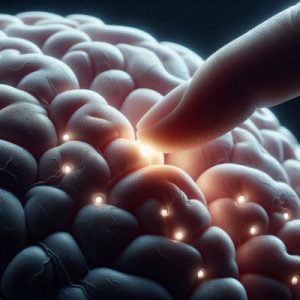You can consciously activate hidden brain circuits to enhance cognitive function and emotional regulation. Engage your prefrontal cortex to improve decision-making and suppress impulses. Stimulate dopamine in the reward system by setting clear, achievable goals to boost motivation. Practice mindfulness to modulate amygdala activity, reducing stress responses. Use deliberate learning and repeated practice for neuroplasticity, and prioritize sleep to consolidate memory. Activate creative insight by engaging the default mode network. These strategies release neural potential waiting for your control.
The Role of the Prefrontal Cortex in Decision Making
 Although decision making involves multiple brain regions, the prefrontal cortex plays a central role by integrating information and evaluating options. When you face complex choices, your prefrontal cortex exercises executive control, coordinating cognitive processes to prioritize goals and suppress irrelevant stimuli.
Although decision making involves multiple brain regions, the prefrontal cortex plays a central role by integrating information and evaluating options. When you face complex choices, your prefrontal cortex exercises executive control, coordinating cognitive processes to prioritize goals and suppress irrelevant stimuli.
It actively modulates impulse regulation by inhibiting premature responses, ensuring that decisions align with long-term objectives rather than fleeting desires. This region continuously assesses potential outcomes, weighing risks and benefits through a dynamic neural network.
Your ability to adapt decisions based on context hinges on the prefrontal cortex’s capacity to balance competing demands efficiently. By maintaining this delicate equilibrium between cognitive flexibility and behavioral restraint, it underpins rational decision making essential for goal-directed behavior in everyday life.
Activating the Brain’s Reward System for Motivation
When you engage in goal-directed activities, activating the brain’s reward system is essential for sustaining motivation. Dopamine triggers within the reward pathways—primarily the mesolimbic circuit—serve as critical neurochemical signals reinforcing behaviors.
When you anticipate or receive a reward, these dopamine surges enhance synaptic activity in regions like the nucleus accumbens, reinforcing motivation to pursue goals. By consciously setting clear, achievable objectives, you can stimulate these dopamine triggers more reliably, promoting consistent engagement.
Additionally, breaking tasks into smaller milestones increases the frequency of dopamine release, preventing motivational decline. Understanding this neurobiological mechanism allows you to optimize task structuring, effectively “pressing” the brain’s hidden motivational buttons to maintain drive and goal persistence.
How Mindfulness Influences the Amygdala and Stress Response
Motivation and stress regulation intersect in the brain’s ability to manage emotional responses, particularly through the amygdala’s role in processing stress signals. When you practice mindfulness, you actively engage neural circuits that modulate the amygdala’s reactivity, enhancing your emotional regulation capabilities.
This modulation reduces the amygdala’s hyperactivity, which is often linked to heightened stress responses. By consistently applying mindful attention, you facilitate top-down control from the prefrontal cortex, dampening the amygdala’s output and thereby promoting stress reduction.
This neural adjustment not only decreases cortisol release but also improves your capacity to respond adaptively to emotional stimuli. Ultimately, mindfulness serves as a neurobiological mechanism that recalibrates the amygdala’s sensitivity, fostering resilience and more effective emotional regulation in the face of stress.
Stimulating Neuroplasticity Through Learning and Practice
Because your brain constantly adapts to new experiences, engaging in deliberate learning and repeated practice actively stimulates neuroplasticity. You can harness neuroplasticity exercises designed to target specific neural circuits, enhancing synaptic strength and promoting dendritic growth.
Applying effective learning strategies—such as spaced repetition, error correction, and active recall—maximizes neural remodeling by reinforcing relevant pathways while pruning less-used connections. Consistent practice induces long-term potentiation, a cellular mechanism critical for durable neural change.
By systematically challenging your cognitive and motor skills, you encourage synaptic plasticity and network reorganization. This process not only refines existing skills but also facilitates the acquisition of new competencies.
To maximize neuroplastic gains, ensure your learning tasks progressively increase in complexity, maintaining an ideal cognitive load that drives adaptive neural modifications.
The Impact of Sleep on Memory Consolidation
Although learning and practice lay the groundwork for neuroplasticity, sleep plays an essential role in consolidating the memories formed during waking hours. During specific sleep stages, such as slow-wave and REM sleep, neural circuits involved in recent experiences are reactivated, strengthening synaptic connections.
You can enhance this process by maintaining rigorous sleep hygiene—consistent sleep schedules, minimizing blue light exposure, and creating a restful environment. Additionally, dream journaling can provide insights into how your brain processes and integrates new information, potentially revealing subconscious memory consolidation patterns.
Techniques to Enhance Creativity by Engaging the Default Mode Network
When you deliberately engage the brain’s Default Mode Network (DMN), you tap into a neural system essential for spontaneous thought, self-referential processing, and creative insight. To enhance creativity by activating the DMN, implement these targeted techniques:
- Structured Brainstorming Exercises: Facilitate free association and divergent thinking to stimulate DMN connectivity.
- Creative Visualization: Practice mental imagery to evoke novel idea synthesis within DMN hubs.
- Mind-Wandering Sessions: Allocate time for undirected thought, enabling the DMN to generate spontaneous associations.
- Reflective Journaling: Record introspective thoughts, reinforcing self-referential processing and DMN engagement.
Utilizing these methods systematically enhances your ability to harness the DMN’s function, fostering innovative problem-solving and original idea generation through precise neural activation.
Conclusion
Think of your brain as a complex control panel filled with hidden buttons—each linked to essential functions like decision making, motivation, stress regulation, and creativity. By understanding how to press these buttons—through targeted activation of the prefrontal cortex, reward system, amygdala modulation, neuroplasticity, sleep, and default mode network engagement—you can optimize your cognitive performance. This precise approach empowers you to harness your brain’s full potential with scientific accuracy and intentionality.








